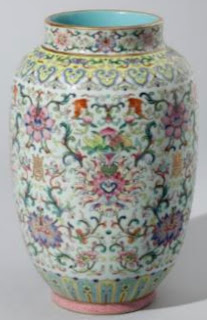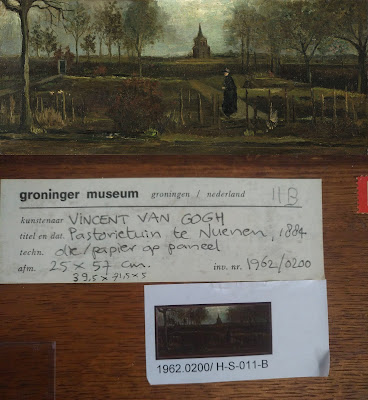Pursuant to a seizure order signed by New York Judge Ruth Pickholz on August 14, 2023, following investigations conducted by the New York District Attorney's Office in Manhattan, a bronze draped figure believed to represent Marcus Aurelius, is seized from at Cleveland Museum of Art. According to New York law, the statue of the Roman emperor, known for his philhellenism and Stoic writings, constitutes evidence of, and tends to demonstrate the commission of the crimes of, Criminal Possession of Stolen Property in the First Degree, Penal Law § 165.54, and a Conspiracy to commit the same crime under Penal Law § 105.10(1).
But how and why was this statue seized?
By the mid-1960s, a number of bronze figures, including portrait heads, never before seen in documented collections, began circulating on the ancient art market in the United States and Europe. By May 1967, law enforcement authorities from the Republic of Türkiye had uncovered their first lead as to these objects eventual origins, after a large, ancient bronze statue was found hidden in a house in the village of Ibecik, located in the mountainous region of the Gölhisar district of the southern province of Burdur, less than 100 kilometers from the southwest Turkish coast.
Their investigation, coupled with studies by Turkish archaeologist Jale İnan on behalf of the museum in Burdur, as well as notes gathered and seized from a local treasure hunter during investigations, have helped establish the find spot for these sculptures which is believed to be the eastern Roman Empire city of Boubon, on the summit and slopes of Dikmen Tepe.
According to the ancient Greek geographer Strabo, the city of Boubon formed a tetrapolis with its neighbouring cities of Cibyra, Oenoanda and Balboura. Culturally diverse, at its pinnacle its inhabitants are said to have spoken as many as four languages: Greek, Pisidian, Solymian and Lycian.
Travellers to Bubon as late as the mid-19th century described finding a walled acropolis, a small theatre of local stone, and the remains of tombs, temples, and other large structures in what remained of the ancient city. Few of these survive today. Decimated by at least one large-scale looting operation, the unprotected ancient city's movable cultural heritage became the victims of poverty and art market greed during the mid-20th century, with much of what had survived throughout history, being carried off for profit.
.png) |
| The Sebasteion at Boubon |
In 1967, the archaeological museum of Burdur undertook the first legal excavation at what remained of Boubon. During these emergency excavations, where some of the explored sites were reburied after to afford more protection, archaeologists documented a Sebasteion near the centre of the terrace close to the agora. This complex is believed to have been devoted to the worship of the imperial cult, honouring members of the Imperial family. It is thought to have been in use for a period of over two centuries from the 1st to the middle of the 3rd century CE.
Inside this Sebasteion, archaeologists discovered two inscribed podiums along the north and the east walls of the room, and four free-standing bases along the west wall where statues of emperors and members of the Imperial household would have been displayed. The majority of the dedications found here date from the half century beginning with the joint reign of Marcus Aurelius and Lucius Verus (161-168 CE) and ending with the sole reign of Caracalla (211-217 CE). Unsurprisingly, by the time archaeologists set about documenting the site, all but one single headless statue had been illicitly excavated and removed.
As part of this documentation, Jale İnan assigned names to seven of the missing bronzes, based on seven of the 14 dedicatory inscriptions documented in situ inside the Sebasteion. According to this researcher's reconstruction, patrons or visitors entering this room in the middle of the 3rd century CE, would have seen bronze statues of Nerva, Poppaea Sabina, Lucius Verus, Commodus, Septimius Severus and lastly, Marcus Aurelius on the podium facing the entrance.
An inscription documented in İnan's 1990 excavation notes on stones forming the top course of the north podium reads:
[Μ.Αυρήλιο]ν Άντωνεϊνον
Over the subsequent years, it was determined that as many as nine, possibly ten, life-sized bronze statues originating from Bubon had been sold onward, first by the site's looters and middlemen, then onward to a dealer in Izmir, a city on Turkey’s Aegean coast. From there, it has been established that some were smuggled out of the country and into Switzerland, passing through the hands of Robert Hecht in defiance of Turkish laws which vested ownership of antiquities with the state.
 |
The Emperor as Philosopher
Image Credit:
Cleveland Museum of Art |
By the late half of 1987, four of these six feet and taller spectacular bronzes, all male, three nude and one wearing a philosopher’s tunic, were known to be in the possession of a Boston coin dealer named Charles S. Lipson. Lipson maintained relationships with several problematic art market actors including Hecht but also George Zakos and others. The bronzes from Turkey were circulated in temporary exhibitions in several North American museums before passing into museum and private collections.
After a whirlwind of touring from 1967 to 1981 at the Museum of Fine Arts in Boston, the Indianapolis Museum of Art, the Minneapolis Institute of Arts and Rutgers University, one of Lipson's bronzes, the draped figure, was purchased by the Cleveland museum in 1986. It was quickly dubbed "The Emperor as Philosopher, probably Marcus Aurelius".
At the time of sculpture's purchase, museum press releases and follow-up publications openly admitted that the bronze was part of a “group of Roman bronze figures and heads, believed to have come from Turkey” that represented various emperors and empresses, which had been created for a structure honouring the imperial cult in the mid-2nd century. All details which match the statues which likely once filled the Sebasteion.
In February and March of this year the New York District Attorney's Office in Manhattan seized and subsequently restituted another extremely important Boubon bronze statue from the same Sebasteion, this one representing the Roman emperor Septimius Severus. In that instance, DANY's Antiquities Trafficking Unit, with the assistance of officials from the Republic of Türkiye, were able to locate and interview one of the individuals who actually looted and smuggled this statue and determined that the bronze had been smuggled into Switzerland by Robert Hecht. Later this statue was circulated onward via Charles Lipson, first via an exhibition at the Museum of Fine Arts in Boston and later loaned long term to the Metropolitan Museum of Art via a private collector.
After proper packing, The Emperor as Philosopher, one of the finest Antonine imperial portraits in existence, will be transferred this month from the Cleveland Museum of Art to New York City. There it will be held as evidence in an “ongoing criminal investigation into a smuggling network involving antiquities looted from Turkey and trafficked through Manhattan.”
To read more about this important and long plundered site, and its confirmatory details with respect to this antiquity, please see the publication Boubon. The Inscriptions and Archaeological Remains. A survey 2004 - 2006 by Christina Kokkinia































.png)
